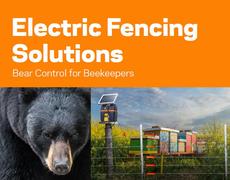| fencing off our drain area and hoping something will grow |
Firstly, we were given a small energiser (father-in-law bought it at a garage sale, amazing what he finds sometimes!), and a small roll of tape. We bought a new car battery and some electric fence stakes. We plugged it all in and dared each other to touch the tape......but there were so many knots in the tape it didn't produce a decent jolt, more like a small tap on the shoulder. Start again.....we bought a big roll of heavy duty tape and some steel picket attachments to make better corners, and an electric fence tester (no more touching the fence!).
| the special electric fence stakes |
| battery and energiser |
| special steel post attachments for the corner posts, the electric fence stakes are a bit bendy |
The reason I was a bit scared of electric fences before is they seem so "technical", I thought I wouldn't know how to hook them up properly and they would require frequent checking, but lets face it, I can make the laptop talk to the printer on the wireless network (thank you, I'm quite proud of that), so surely I can make an electric fence work. As far as I could see from a brief internet search (good explanation here), the main thing is to connect one battery terminal to the fence and the other to the earth. The better your connections, the stronger the shock. The earth terminal is attached to a metal rod which is pushed into the ground, the area around the rod must be damp as its the earth that completes the circuit when the animal touches the fence, so damp earth will conduct the electric charge better than dry earth. The amount of shock the animal gets will depends on the length of the fence too. Once the animals are used to seeing electric fences you can increase the distance and they will stay away if they remember that first nasty shock. Another good point from that website is that some animals have thick skin and lots of hair/fur, so they won't feel the shock as strongly as a human (another reason to use a tester and not touch the fence yourself!).
The only other thing to remember is, after you've got it all set up and working, don't forget to keep an eye on it as the battery will go flat eventually. In our case it took about 4 weeks. Luckily the cattle had got used to avoiding the area and didn't seem to notice that the fence wasn't working. We charged the battery overnight and plugged it in again the morning.
Do you use electric fencing? Any tips?
.jpg)
.jpg)
.jpg)
.jpg)
.jpg)
.jpg)
.jpg)
.jpg)
.jpg)
.jpg)





